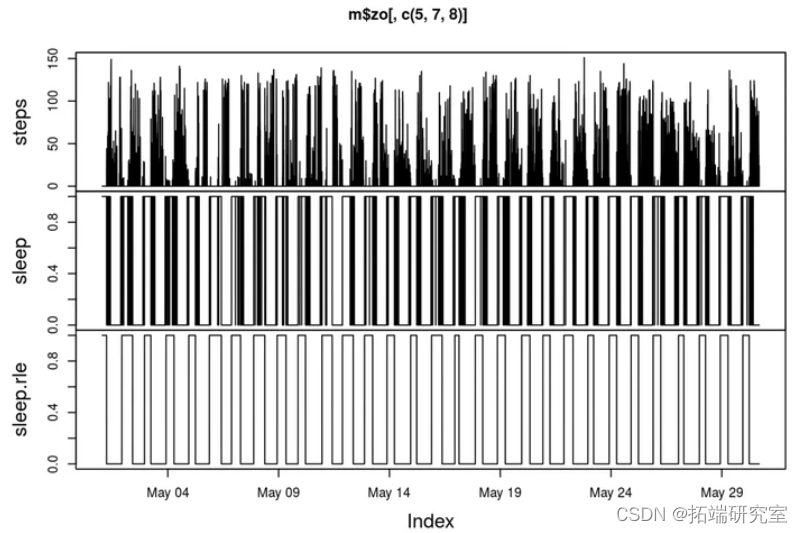
下面显示了四种预测时间序列的方法。
支持向量机(R package e1071。“Chih-Chung Chang and Chih-Jen Lin,LIBSVM:a library for support vector machines,2005.”的实现)。
递归分区(R package rpart。“Breiman,Friedman,Olshen and Stone。Classification and Regression Trees,1984”的实现)。
将最后两种方法的性能与rle进行比较,得到svm的95%和rpart的94%。
# Apply rle (forward and backward) and a condition: lenght time for sleep changes of 1h m$rle(Xvar ='sleep',Xlmin =60)m$setZoo()# Show differences between conditional and conditional + rleplot(m$zo[,c(5,7,8)],type ='l')

# Subset a week

# Plot correlation matrix
w$correlation(Xvars =w$nm[c(2:7,9)])

# SVM and Recursive partitioning
plot(tune.gamma.cost)

rpart.p <- predict(rpart.m, data[,-1],type ='class')# Resultsdt$svm = as.integer(svm.p)dt$rpart = as.integer(rpart.p)plot(w$dt2zoo(dt)[,c(5,8,9,10)],type ='l')


 R语言SVM、决策树与因子分析对城市空气质量分类与影响因素可视化研究
R语言SVM、决策树与因子分析对城市空气质量分类与影响因素可视化研究 R语言神经网络模型金融应用预测上证指数时间序列可视化
R语言神经网络模型金融应用预测上证指数时间序列可视化 R语言软件对房价数据预测:回归、LASSO、决策树、随机森林、GBM、神经网络和SVM可视化
R语言软件对房价数据预测:回归、LASSO、决策树、随机森林、GBM、神经网络和SVM可视化 R语言SVM支持向量机文本挖掘分类研究手机评论数据词云可视化
R语言SVM支持向量机文本挖掘分类研究手机评论数据词云可视化


